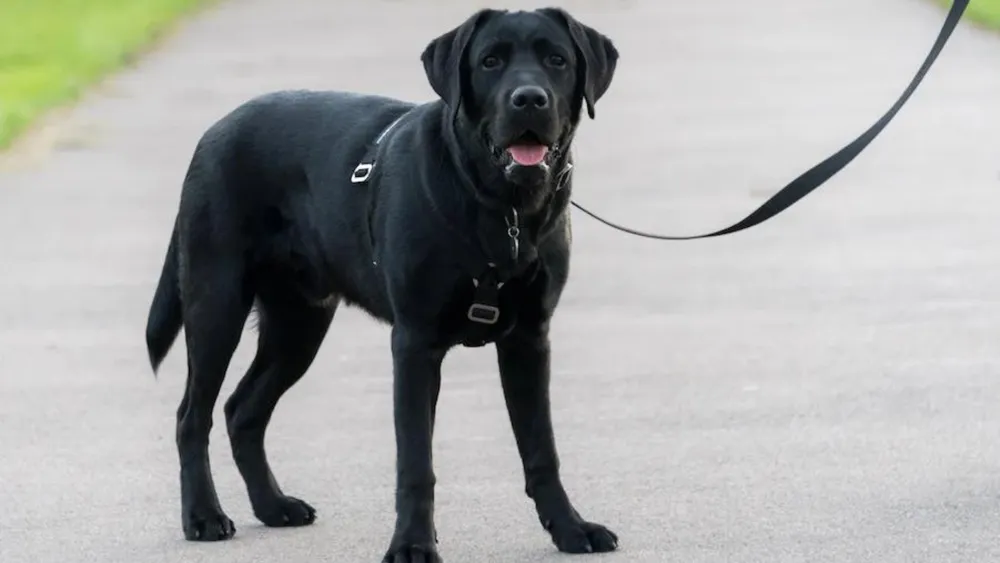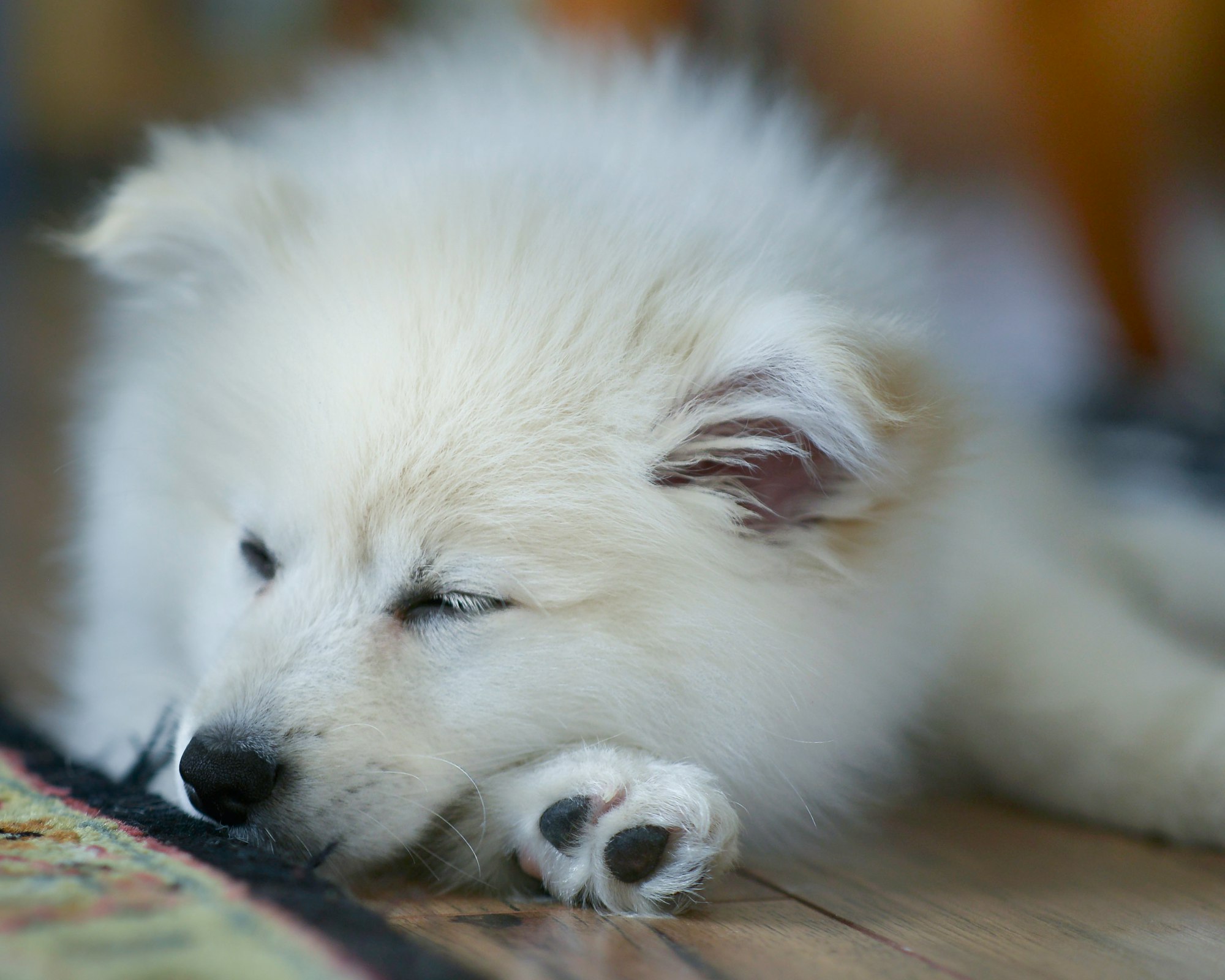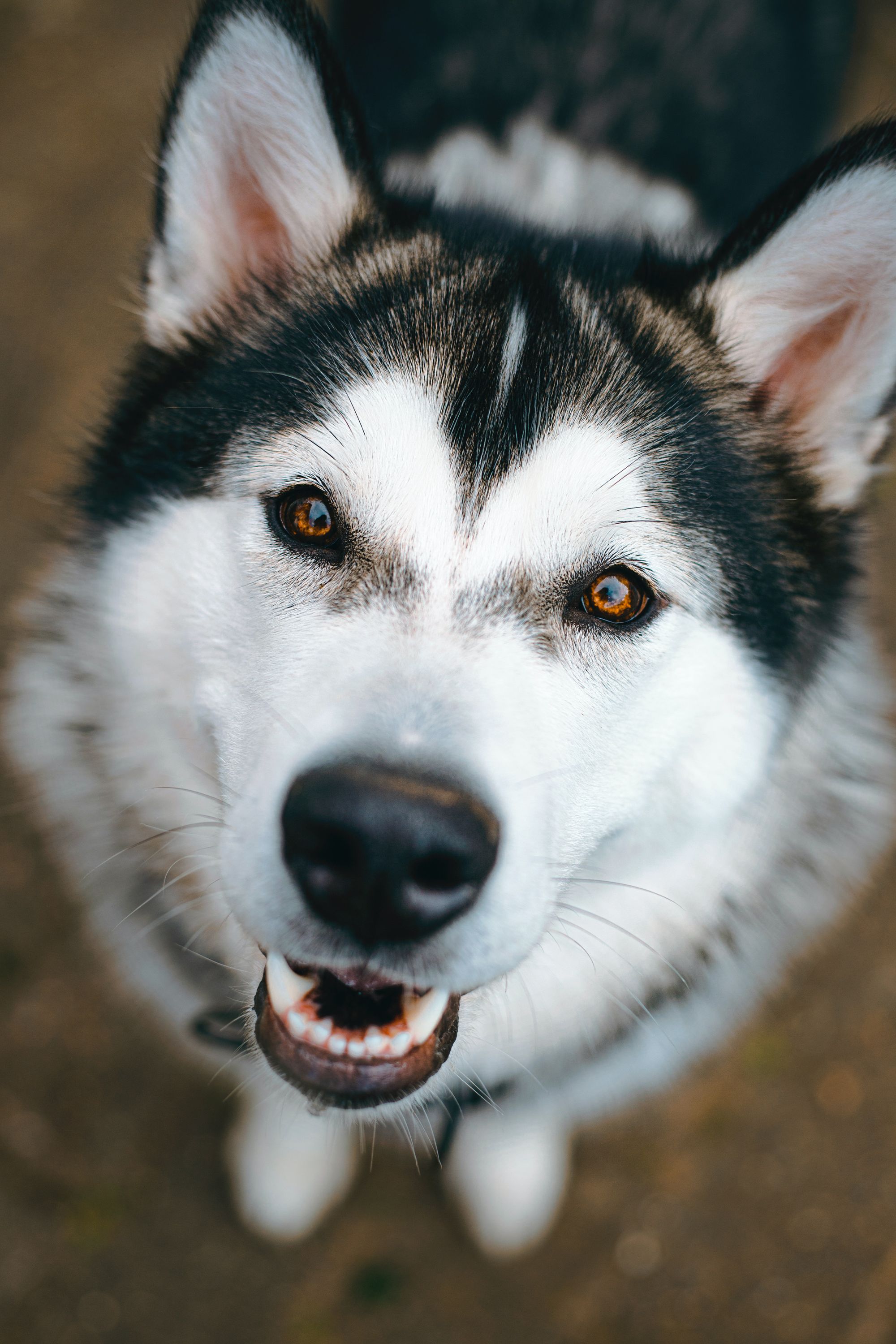You’ve just welcomed a new puppy into your life, and your heart is overflowing with joy. You look into those innocent eyes and wonder, what’s the best I can provide for you? Among those thoughts, the question of a harness or collar for your puppy might have surfaced.
With such a variety of dog accessories available, making the right choice for your new companion can feel daunting. But don't worry, we're here to provide a comprehensive guide.
Understanding the Basics: Collars and Harnesses
Before delving into the details, let's start with the basics. A dog collar is a simple band, usually made of leather or nylon, that wraps around your dog's neck. It's often the go-to for pet owners as it's convenient for attaching ID tags and leashes.
On the other hand, a dog harness fits around your dog's chest and back. It provides more control and distributes force more evenly than a collar. Harnesses come in a variety of designs to cater to the specific needs of different breeds.
Pros and Cons of Puppy Collars
Now that we've defined what collars and harnesses are, let's delve into the specifics of each, starting with collars.
Benefits of a Puppy Collar
Puppy collars are straightforward to use, even for first-time pet parents. They're easy to slip on and off, and are a reliable place to attach identification tags. This could be a lifesaver if your pup ever gets lost.
Also, some dogs prefer collars over harnesses as they are more lightweight and less restrictive.
Disadvantages of a Puppy Collar
The primary disadvantage of using a collar is the strain it can put on your puppy's neck, particularly if they have a habit of pulling on the leash. This can lead to potential injuries in the neck or trachea, especially for smaller breeds or puppies.

Weighing the Advantages and Disadvantages of a Puppy Harness
Harnesses, while a bit more complex, offer their own set of advantages and challenges.
The Plus Side of a Puppy Harness
A dog harness distributes the pressure from the leash across the chest, back, and shoulders, rather than concentrating it on the neck. This is beneficial for puppies prone to pulling or those with delicate necks, such as brachycephalic breeds like Bulldogs or Pugs.
A harness can also offer greater control over your pup, which can be particularly useful for energetic breeds or when training your puppy to walk on a leash.
The Downsides of a Puppy Harness
The primary drawback of a harness is that it can be more difficult to put on, especially with a wriggly puppy. Additionally, poorly fitted harnesses can cause discomfort or even injury, so it’s crucial to choose the right size and adjust it correctly.
Harness or Collar: Which is Best?
So, harness or collar for your puppy - which is best for your furry friend? The answer, as with most things, depends on your puppy's individual needs.
If you have a calm and well-behaved pup who doesn't pull on the leash, a collar may work perfectly fine. It's also a handy choice for attaching ID tags.
However, if you have a playful pup that often leaps around or pulls, a harness is a safer choice. It provides more control, is better for training, and poses less risk of injury.
Remember, whether you choose a harness or collar, proper fit is crucial. An ill-fitting harness or collar can cause discomfort, skin irritation, and even injuries. It's also a good idea to let your puppy get used to their new accessory gradually. Start by having them wear it for short periods at home before venturing out on walks.
A Word on Training
It's important to mention that while your choice of gear can help, it's not a substitute for proper training. Teaching your puppy to walk nicely on a leash is crucial, regardless of whether you choose a collar or a harness.
In the end, the choice between a harness and collar for your puppy comes down to their personality, breed, size, and your walking environment. You might even choose to use both at different times.
Making the Right Choice: Considering Your Puppy's Breed and Size
The breed and size of your puppy can also play a significant role in determining whether a harness or collar is the better option. For instance, smaller breeds with delicate necks, such as Dachshunds or Chihuahuas, can benefit more from a harness that doesn't put pressure on their necks.
Conversely, large breeds with robust necks, like Labradors or Golden Retrievers, might be more comfortable with a collar, especially if they're well-behaved on walks.
However, larger, powerful breeds that tend to pull, like Huskies or Boxers, might also be better managed with a harness, offering you more control and minimizing their risk of injury.
Putting Safety First: Harness and Collar Safety Tips
Whether you opt for a harness or a collar, there are a few safety tips you should keep in mind:
- Proper fit is crucial. An ill-fitting collar or harness can cause discomfort and even injury. Make sure you can slip two fingers between the collar or harness and your pup's skin.
- Check regularly for wear and tear. A worn-out collar or harness can break unexpectedly. Regularly inspect your puppy's gear for any signs of damage and replace as necessary.
- Consider reflective or light-up options for nighttime walks. This helps ensure your puppy is visible to cars and other pedestrians, preventing potential accidents.
Product Recommendations: Finding the Right Gear for Your Puppy
If you're feeling overwhelmed by the multitude of options on the market, we're here to help. Here are a few product recommendations for both harnesses and collars:
Collar Recommendations
- The Blueberry Pet Essentials Classic Collar is a solid, affordable option. It's made from durable nylon and comes in a variety of sizes and colors.
- For a luxury option, consider the Soft Touch Collars Luxury Real Leather Padded Dog Collar. It's crafted from genuine leather and has a soft sheepskin leather padding for extra comfort.
Harness Recommendations
- The Puppia Authentic RiteFit Harness is a soft, adjustable harness that's perfect for smaller breeds. It has both neck and chest adjustments for the perfect fit.
- For larger breeds, the Rabbitgoo No-Pull Dog Harness is a popular choice. It features a no-pull design and two leash clips for better control.
Understanding Your Puppy's Behavior: Harness vs Collar
While breed and size are crucial factors, your puppy's behavior is also a key determinant in the collar vs harness debate. For puppies who are still learning leash etiquette and tend to pull, a harness can be a beneficial tool. It discourages pulling by directing the force back towards you, making it easier for you to guide your pup.
On the other hand, well-behaved puppies who don't pull or dart off suddenly can do just fine with a collar.
Training Your Puppy: Harness or Collar?
Harnesses and collars can also play different roles in training your puppy. A harness can give you more control during training sessions, making it a great tool for teaching commands like "heel" or "stay."
Collars, especially specialized training collars, can also be useful for certain types of training. However, improper use of training collars can cause harm or fear, so they should only be used under the guidance of a professional dog trainer.
The Role of Comfort: Harness or Collar?
Another aspect to consider when deciding between a harness and a collar is your puppy's comfort. Some pups may find a collar more comfortable and less intrusive, especially if they're not used to wearing anything yet.
Other puppies, particularly those with sensitive skin or short fur, might find a harness more comfortable as it spreads out the pressure over a larger area and prevents chafing around the neck.
Frequently Asked Questions about Puppy Harnesses and Collars
To wrap up our comprehensive guide, let's address some common questions pet parents often have when deciding between a harness or collar for their puppy:
Can I use both a harness and a collar?
Absolutely! Many pet parents use a collar for holding ID tags and a harness for walks. This approach can offer the benefits of both, and you can switch between them based on your puppy's needs and activities.
How often should I replace my puppy's harness or collar?
This will depend on your puppy's growth and how quickly they wear out their gear. Check regularly for signs of wear and tear, and remember that puppies grow fast, so regular adjustments or size upgrades will be necessary.
Can my puppy wear their collar or harness all the time?
It's generally safe for your puppy to wear their collar or harness for short periods during the day, but it's advisable to remove it when they're at home relaxing, playing, or sleeping. This helps to prevent any accidental injuries, especially for puppies who love exploring.
Adjusting to a Collar or Harness: Tips for a Smooth Transition
If you've decided on a collar or harness for your puppy, you may be wondering how to get them used to their new gear. Here are some tips:
- Introduce the collar or harness slowly. Start by letting your puppy sniff and investigate it. Reward their curiosity with treats and praise.
- Try it on during a calm time. Your pup is more likely to accept their new accessory when they're relaxed. Try fitting it on during a quiet time at home.
- Start with short sessions. Don't expect your puppy to wear their collar or harness all day from the start. Begin with short periods and gradually increase the duration.
- Pair it with positive experiences. Try putting on the collar or harness just before mealtime or playtime. This helps your puppy associate it with good things.
The Importance of Regular Checks and Adjustments
As your puppy grows, it's essential to regularly check the fit of their collar or harness. A too-tight collar or harness can cause discomfort and skin irritation, while a too-loose one can be a safety risk if your puppy can slip out of it.
As a general rule, you should be able to slip two fingers between the collar or harness and your puppy's skin. Regular adjustments will ensure that your pup remains comfortable and secure.
Beyond the Basics: Exploring Advanced Dog Gear
As you and your puppy become more comfortable with basic walking gear, you might want to explore other options. For example, there are specialized training collars and harnesses designed for specific training purposes. There are also various accessories like hands-free leashes, light-up collars, and harnesses for night-time safety.
Just remember, no matter what gear you use, it should enhance your and your puppy's walking experience, not detract from it.
Your Role as a Puppy Parent
At the heart of the collar versus harness debate is your responsibility as a puppy parent. Your puppy depends on you to make decisions in their best interest. Whether you choose a collar, a harness, or both, remember to prioritize your pup's comfort, safety, and happiness above all else.
As you navigate this exciting journey of puppy parenthood, remember that there's more to walking your pup than the gear you use. It's about bonding, exploring the world together, and building trust and understanding.
So here's to you and your puppy, embarking on countless adventures, creating many cherished memories, and forging a bond that lasts a lifetime. Happy walking!
Conclusion: Making the Right Choice for Your Furry Friend with Fi
Choosing between a harness or a collar for your puppy is an important decision. As we've discussed in this guide, the best choice depends on your puppy's breed, size, behavior, and comfort. Both collars and harnesses offer unique benefits, and your decision should align with the specific needs and characteristics of your beloved pup.
As you embark on this journey of puppy parenting, remember the importance of providing a high-quality collar or harness to ensure their safety and comfort during your daily adventures.
We'd like to wrap up this guide by introducing you to a company that stands out in the world of dog collars - Fi.
Fi is a company dedicated to ensuring your furry friend's safety by offering state-of-the-art GPS dog collars. As you venture into this new exciting phase of life with your puppy, you might want to consider Fi as a reliable option for collars.
Their dog collars don't just function as a regular collar, they also come equipped with a GPS tracking feature. This ensures that you always know where your puppy is, giving you peace of mind, especially during this early phase where exploring might mean a bit of mischief!
With Fi, you're not just getting a collar, but also the assurance of knowing your pup's whereabouts at all times, right at your fingertips. This kind of security is priceless when it comes to the safety of our four-legged friends.
Choosing Fi means investing in a top-tier collar that serves multiple functions. It's not just about providing a spot to attach your leash, but it's also about providing additional safety measures that keep your puppy secure and give you peace of mind.
Remember, the journey with your puppy is filled with many decisions. The debate between a "harness or collar for your puppy" is just one of them. As you navigate through these choices, know that companies like Fi are there to offer solutions that merge functionality, style, and safety.
Whatever choice you make, whether it's a harness, a collar, or both, always prioritize your pup's comfort and safety. Because at the end of the day, our furry friends rely on us, and ensuring their well-being is the best way we can show our love.
Here's to the start of a fantastic journey with your new best friend, filled with love, adventures, and the joy that only a puppy can bring. Happy puppy parenting!
Want to know more about dog accessories?



